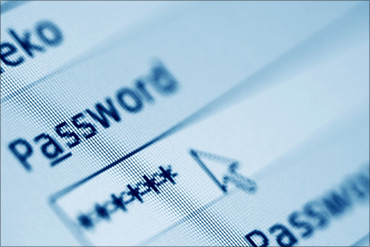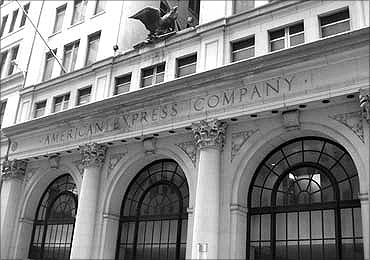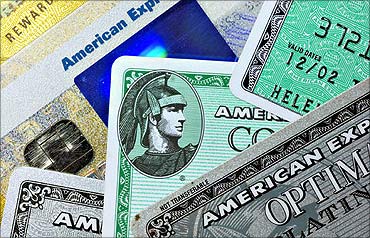Anurag K Agarwal
Keeping a 'trade secret' secret and 'confidential information' confidential is not only difficult but also costly.
The following book extract from "Business and Intellectual Property: Protect Your Ideas" by Anurag K Agarwal discusses some of the key issues relating to trade secret protection.
Trade secret? How to protect it
Image: confidential information.When we say 'any' information, it does not as a matter of fact mean 'any' because such an information must be 'confidential' and a 'secret'.
It has to be tested on the anvil of reasonableness. The simple understanding is that such information should not be in public domain, it should not be obvious and there must be something 'secretive' about it.
Trade secret? How to protect it
Image: What makes infomartion confidential.If A tells B in confidence a trade secret - the formula for making a successful movie - two brothers with similar tattoos on their backs separated in the village fair in childhood and meet later in life, one as a robber and the other as a police inspector, it does not become a 'trade secret' as it is well known and has been used by a number of film producers.
Trade secret? How to protect it
Image: Owner believes the information to be confidential.Owner believes the information to be confidential
One prerequisite is that the owner must believe that the information is confidential and a secret.
It is not necessary that no one else knows about it. There may be persons who know about it either by permission of the owner or through their own efforts or by serendipity.
But, till the time such information is not in public domain, it remains 'confidential information' or 'trade secret'.
Trade secret? How to protect it
Image: Infomation leak can lead to blackmailing.For instance, if A comes to know of B's business plan, which is confidential and known only to B's team members (Bl, B2, B3...Bn), A may blackmail B. If B thinks that it does not affect him even if A discloses it to the world, there is no problem for B.
Trade secret? How to protect it
Image: Protect confidential information.In case B does not know that A knows B's plan, B will continue to believe that the information has not been leaked to anyone and it is safe to continue with the business plan.
Such a state of affairs is most undesirable on the part of B, as it shows that B has been living in a fool's paradise and has not taken adequate measures to protect the confidential information.
Trade secret? How to protect it
Image: Legal protection.It should be a reasonable belief. In case B goes on to tell such information indiscreetly to every one he meets as if discussing the day's weather, even if he starts the conversation with, 'this is between you and me...', there is no protection given by law as his understanding of keeping the information a secret is not reasonable.
Trade secret? How to protect it
Image: Nano car being assembled at the Sanand plant.Photographs: Reuters.
If it is highly confidential, all foreseeable precautions must be taken. The 'will' of a multi-billionaire, Coca-Cola formula, Tata's Rs 1-lakh car (before its launch and christening as Nano), etc all fall in this category.
In such a scenario abundant precaution is to be practiced. It may not be adequate protection even if it is kept inside a two-foot steel locker, if the key is not well-protected.
Trade secret? How to protect it
Image: Ratan Tata with the Nano.Photographs: Reuters.
Reasonableness shall be judged by the holistic behaviour of the owner. It is reported that Tata Motors had taken unprecedented security measures to keep Nano a secret prior to its unveiling at the 9th Auto Expo at Pragati Maidan in New Delhi on January 10, 2008.
There was not even a whiff of Nano to the paparazzi. At this point one distinction needs to be made - the efforts have to be 'reasonable' and law does not expect the owner to make efforts, which may be made by a paranoid, who is obsessed with something and distrusts everyone.
Trade secret? How to protect it
Image: American Express building.She had joined AmEx in March 2001, in the credit cards division and was transferred to the wealth management division in 2003 and was made the head of that division in April 2005.
AmEx had named and styled various business activities of wealth management as 'iWealth View', which had products like demand products, term deposits, and mutual funds.
As head of the Northern India wealth management division, Priya had a team of thirteen financial concierges and three regional managers. She had access to highly confidential information and trade secrets of AmEx such as customer data and information.
According to AmEx, it had taken all reasonable steps to ensure the protection of confidential information with individual password and authorisation to only such persons who could access that information.
Trade secret? How to protect it
Image: Customers.According to AmEx, she had used her official position to get the entire customer data which was confidential and to which she had no access.
AmEx also came to know that she had planned to join a competitor and was persuading customers to shift their accounts from AmEx to the competitor.
Talks between AmEx and Priya to resolve this dispute failed and in October 2005, AmEx terminated Priya's services primarily on the ground that she had disclosed confidential information to persons which was not in connection with AmEx's business.
Trade secret? How to protect it
Image: AmEx cards.Regarding confidential information, relevant clauses of the terms and conditions of her employment contract stated:
Trade secret? How to protect it
Image: Protecting confidential information.
Trade secret? How to protect it
Image: Returning official documents.This code of conduct provides in great detail almost everything conceivable as intellectual property, including confidential information and trade secrets.
The termination letter included a request to Priya to return AmEx's confidential information and data (list of customers with account details) and to refrain from soliciting any of its customers.
Priya had returned the laptop, car, corporate card, identity card, mobile phone, and denied having possession of any confidential material of Am Ex.
Trade secret? How to protect it
Image: AmEx office.Priya contested the claims of AmEx largely on two grounds, that she did not get any list prepared and that the said information - names, addresses, etc of the customers - was not confidential.
The Delhi High Court discussed the matter at great length and decided that first, Priya had no reason to get such a list prepared as she already knew it and secondly, such information cannot be categorised as 'confidential information'.


















article